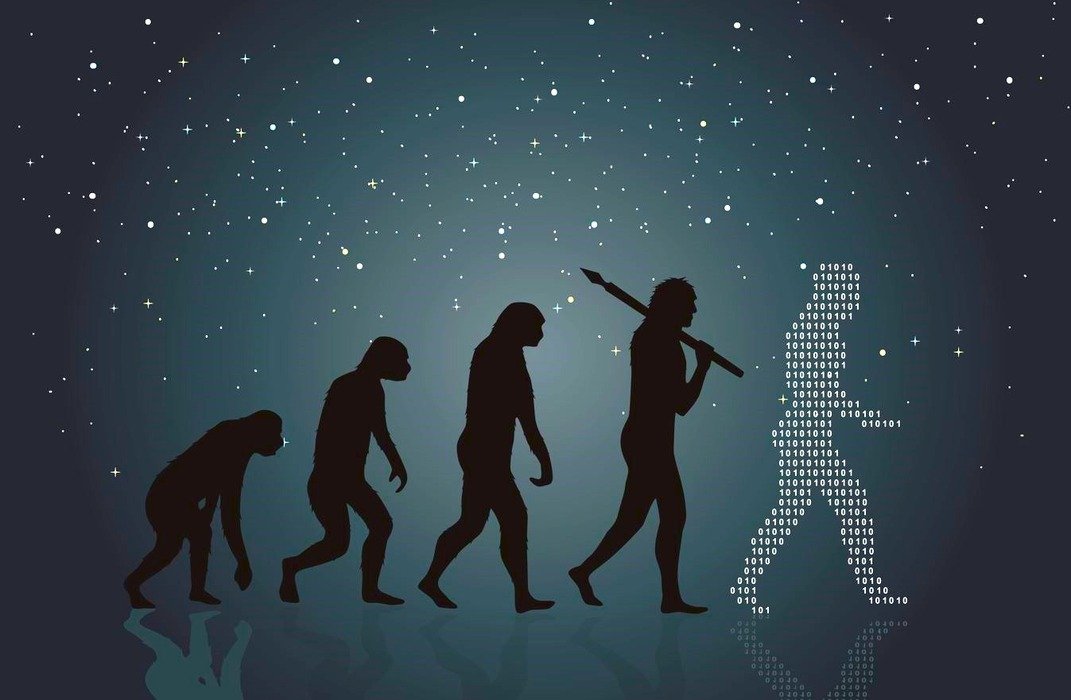What Does Human Evolution Tell Us About Technological Evolution?
Image credits: mmatee via Shutterstock
While reading a recent Wired article, I was intrigued by Sam Altman’s reflection on how technology seems to be rolling out. Here’s what the cofounder of OpenAI said:
“If you asked the 10-year-old version of me, who used to spend a lot of time daydreaming about AI, what was going to happen, my pretty confident prediction would have been that first we're gonna have robots, and they're going to perform all physical labor. Then we're going to have systems that can do basic cognitive labor. A really long way after that, maybe we'll have systems that can do complex stuff like proving mathematical theorems. Finally we will have AI that can create new things and make art and write and do these deeply human things. That was a terrible prediction—it's going exactly the other direction.”
Exploring Parallels: Human Evolution and Technological Trajectory
My brain kept snagging on this quote. After reading it a handful of times, I couldn't help but wonder: Are there parallels between this envisioned trajectory of technology evolution and the story of human evolution?
The fossil record indicates that the ancestors of humans underwent a series of remarkable transformations over millions of years, thanks to the pressures of the environment operating on the variations present in those populations. Over time, these hominin species (eventually including modern humans) walked upright and evolved teeth, brains, and behaviors that were markedly different from apes (and each other).
But which came first for humans? Bipedalism (walking on two feet) and dexterity—or advanced cognition? The first two traits seem related to the robots and physical labor of Altman’s quote above, while the latter seems to parallel the transition from basic cognitive abilities to “complex stuff.”
Lucy - Australopithecus afarensis human ancestor. | Image credits: frantic00 via Shutterstock
The famous 3.2 million-year-old "Lucy" (Australopithecus afarensis) had a pelvis and leg bones suggesting she walked upright, although with a gait slightly different from ours. The evolution of our hands, specifically our opposable thumbs, seems to have come slightly later. The hand bones of early hominins indicate a capability for a precision grip, which might have been used for making and using tools.
Mind and Matter: Cognitive Abilities and Physical Evolution
Here's the kicker: these adaptations in hands and feet evolved long before the brains of our ancestors expanded! Our ancestors walked like us before they could think like us.
Brain casts from early human fossils reveal an interesting story. While it's challenging to directly infer cognitive capabilities from fossil skulls, these casts provide insights into brain structure. The size and the organization of early hominin brains suggest that for much of our evolutionary history, our ancestors had cognitive abilities more comparable to today’s great apes than to modern humans.
💡 It therefore seems that in our evolutionary tale, walking upright and manual dexterity arose before the great leap in cognitive capabilities that set modern humans apart … in our own estimation, at least. But that’s the opposite conclusion to the quote that kicked off this article.
As a child, Altman expected robots to come before algorithmic intelligence—similar to the course of human evolution. I’m a few years older than Altman, and it doesn’t surprise me that this was his expectation. Not because I think he knew about Lucy, but because our childhoods included books and shows about robots. Not AI, in any widespread sense. Embodied tech, not thinking tech.
Fast forward 30+ years, and 2023 was stuffed with developmental leaps in AI that have outpaced advances in robotics. Yes, robots are rapidly mastering human-like physical tasks; I have fond hopes for the TidyBot in particular. Some robots even physically resemble humans and are built for associated human-like tasks. Since “intelligence” can drastically improve a robot’s performance, I expect that robotics will piggyback on AI breakthroughs at an accelerating pace.
Navigating the Future: AI, Robotics, and Ethical Considerations
Image credits: Miriam Doerr Martin Frommherz via Shutterstock
What could these initially parallel, but now intersecting, evolutionary paths mean for our technological future? Both opportunities and threats, of course! There's immense potential in perfecting AI-driven physical labor. From aiding the differently-abled to heavy-duty tasks in unsafe environments, the applications are vast. The true magic might happen when AI systems integrate advanced cognition with sophisticated dexterity. Think of a robot that can brainstorm innovative solutions and then execute them in the physical world.
💡 But we also need to bias the future toward ethical and responsible uses of physical AI, along with broad accessibility.
Let’s not get distracted from pressing AI issues today, but let’s also avoid a Skynet future.
Charting Many Possible Futures: The Unpredictable Nature of Evolution
Image credits: thinkhubstudio via Shutterstock
Last, let's not forget that evolution—whether biological or technological—is inherently unpredictable. There is no single “future” that is inevitable. By mindfully navigating the path of adapting, innovating, and improving technology, we become architects of many possible futures.
As I draw inspiration from our species’ own evolutionary journey, I’m inspired to guide technology to not just mimic human capabilities but perhaps even surpass them in harmony with our needs—and the greater needs of our societies and planet. After all, it’s our hands and our brains that have led us to this moment. Now we can bring our hopes to our next evolutionary step.
About Tiffany
Dr. Tiffany Vora speaks, writes, and advises on how to harness technology to build the best possible future(s). She is an expert in biotech, health, & innovation.
For a full list of topics and collaboration opportunities, visit Tiffany’s Work Together webpage.
Get bio-inspiration and future-focused insights straight to your inbox by subscribing to her newsletter, Be Voracious. And be sure to follow Tiffany on LinkedIn, Instagram, Youtube, and X for conversations on building a better future.




